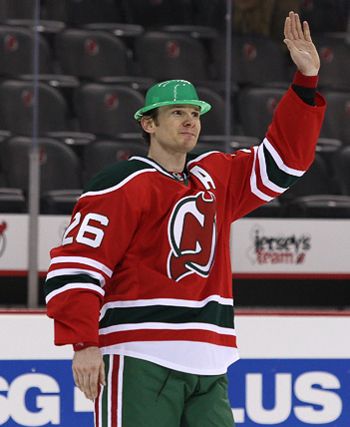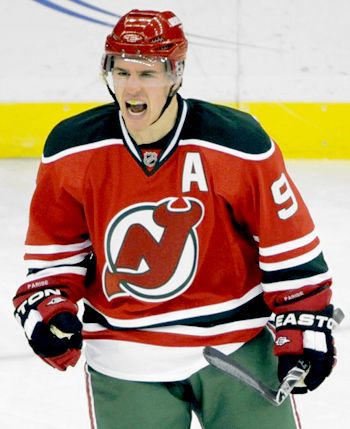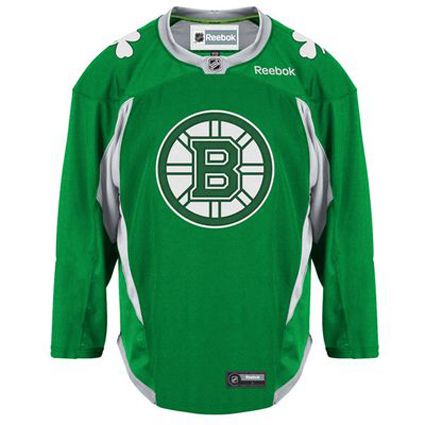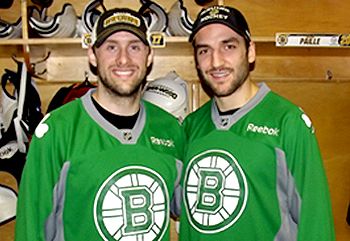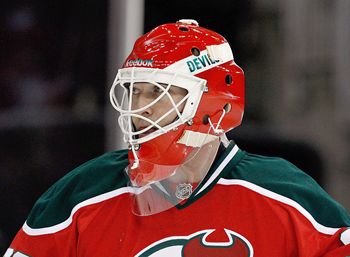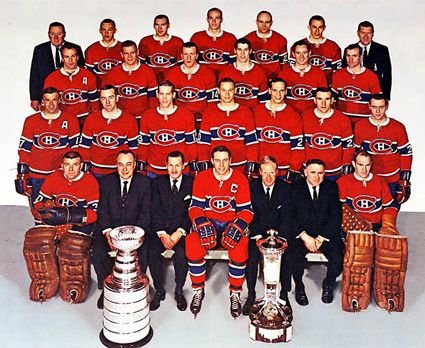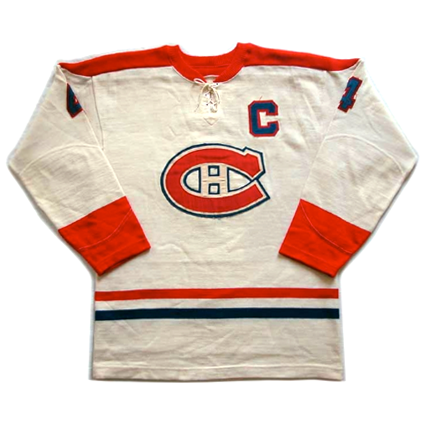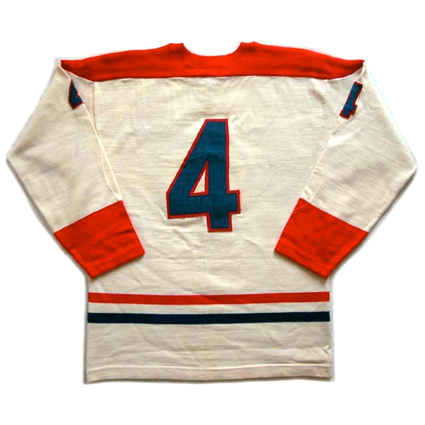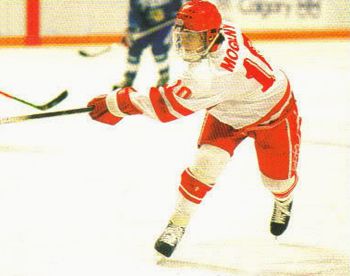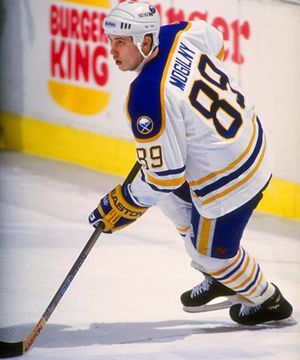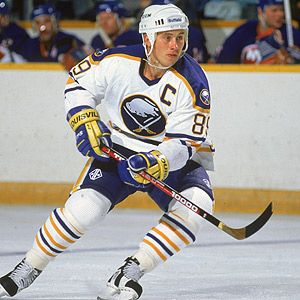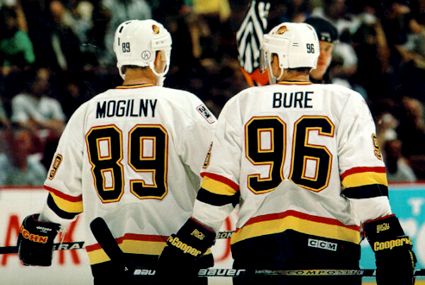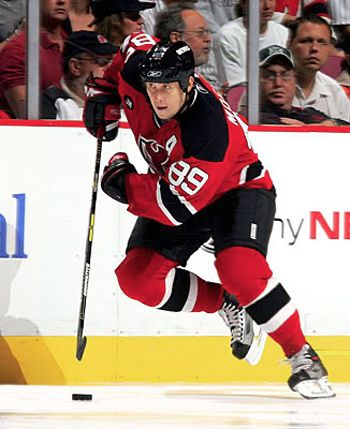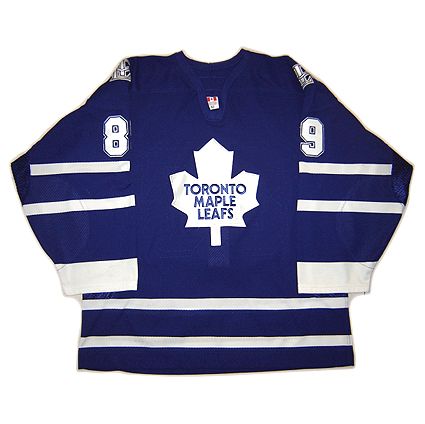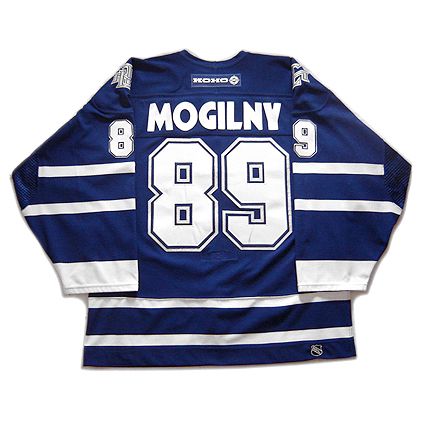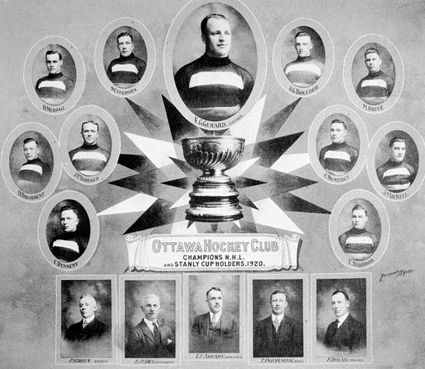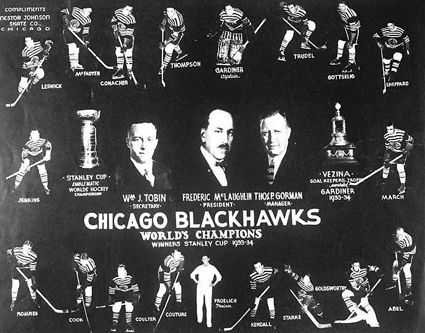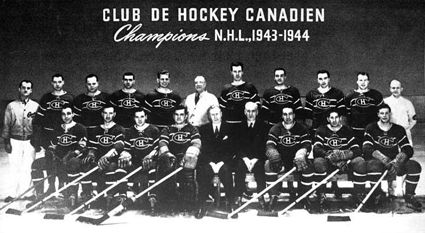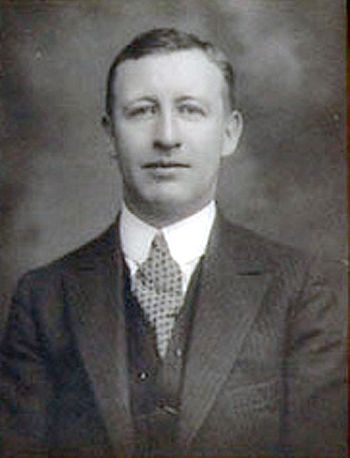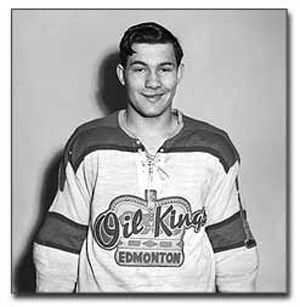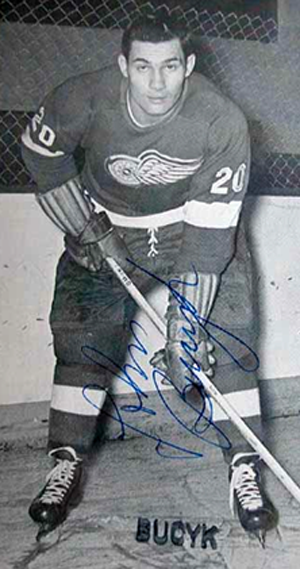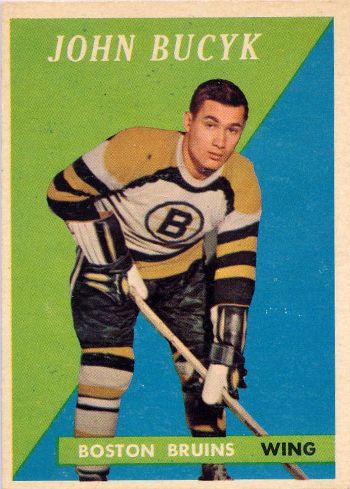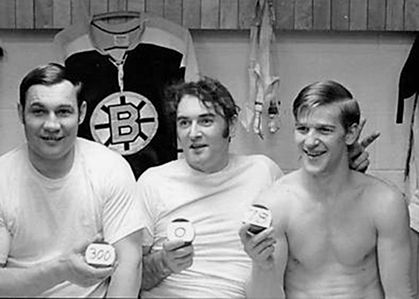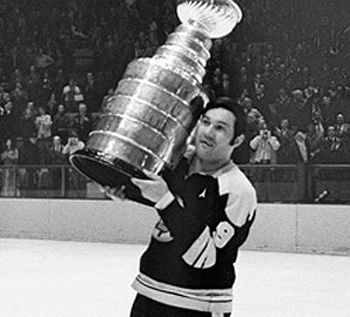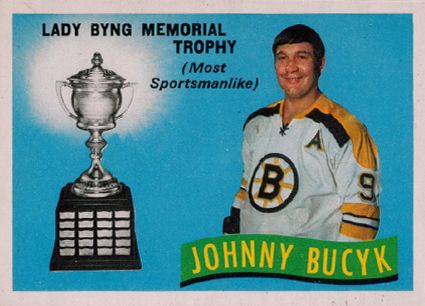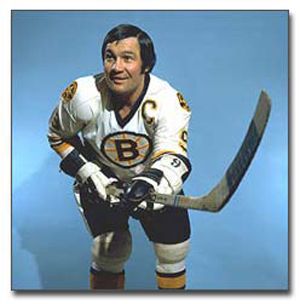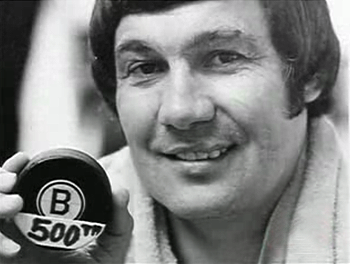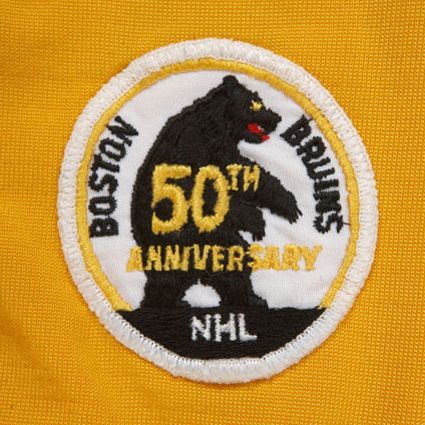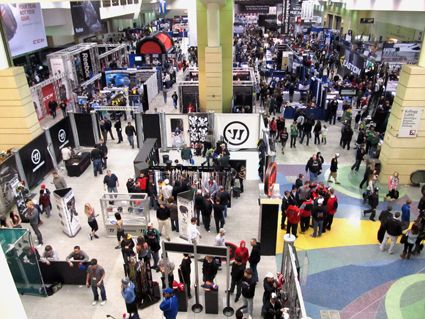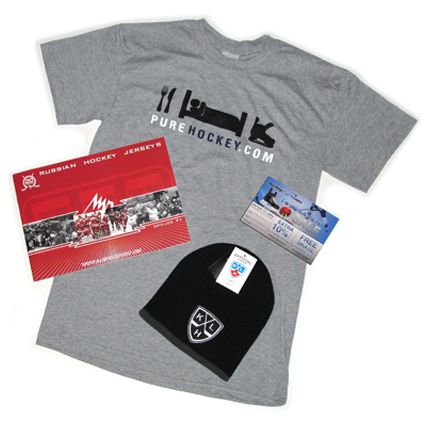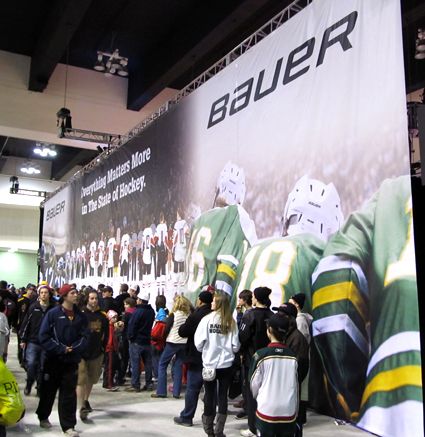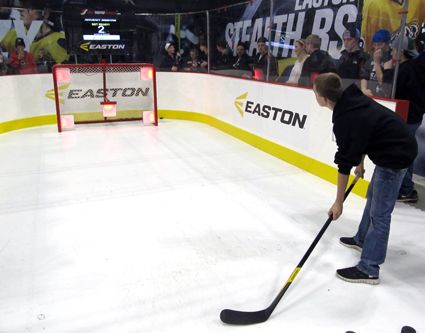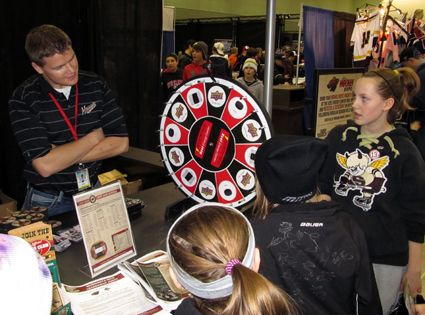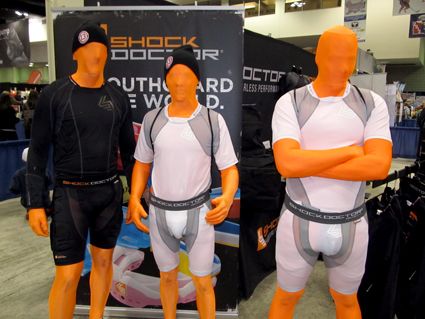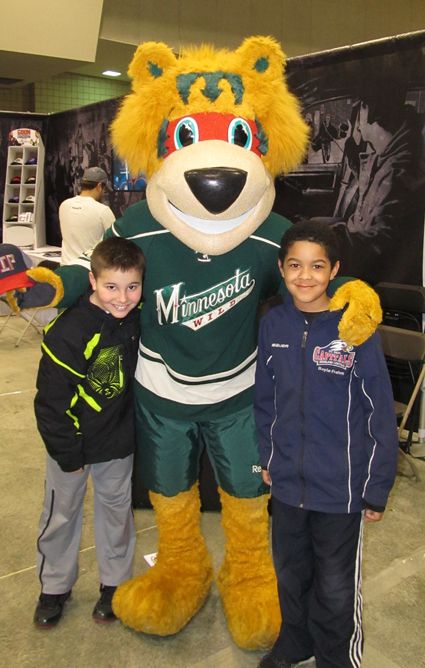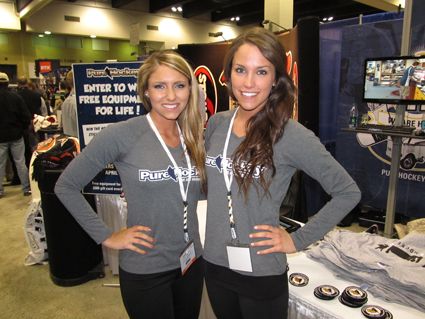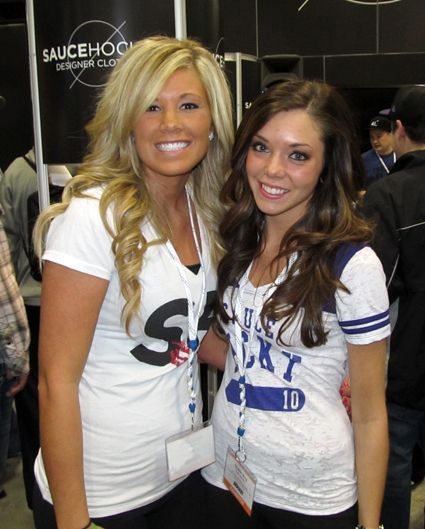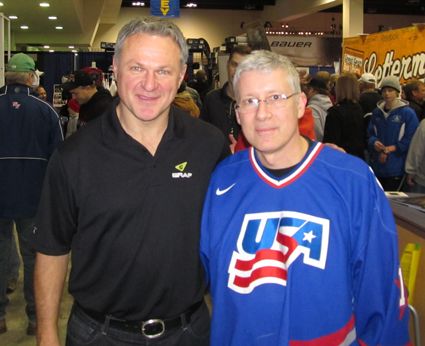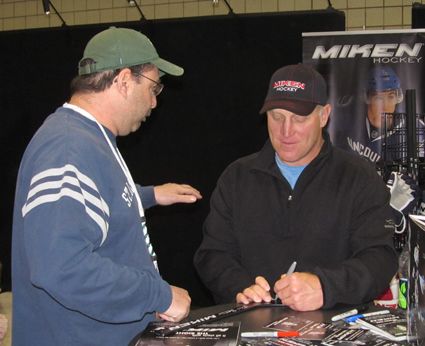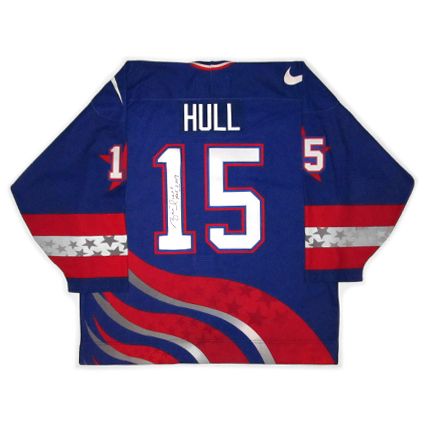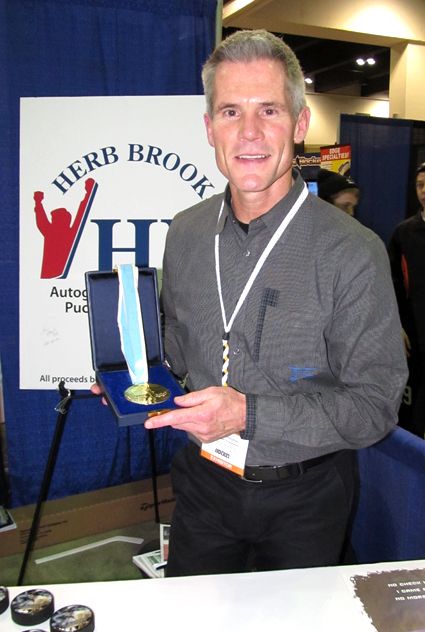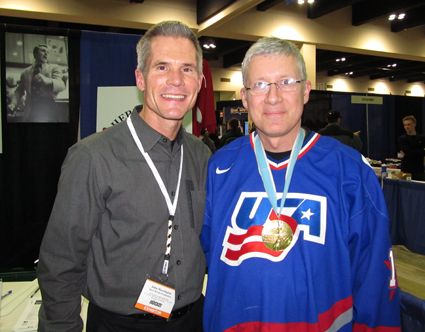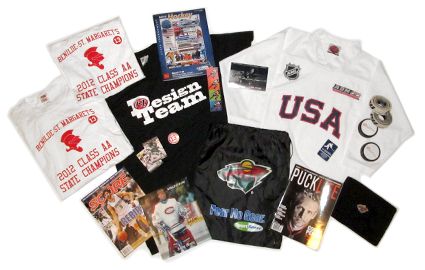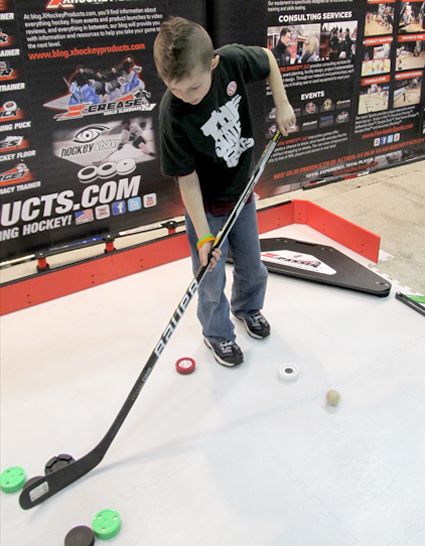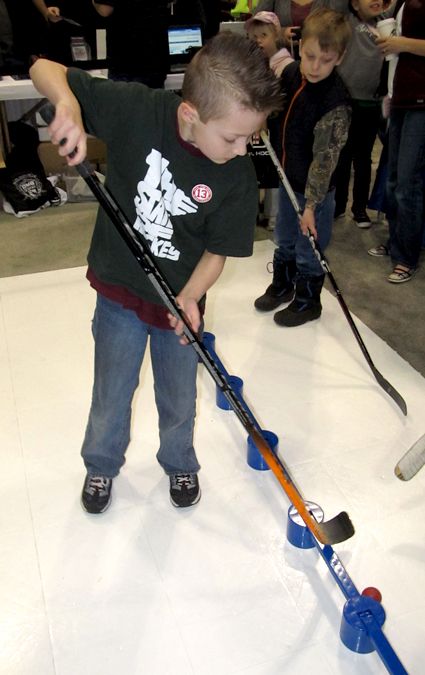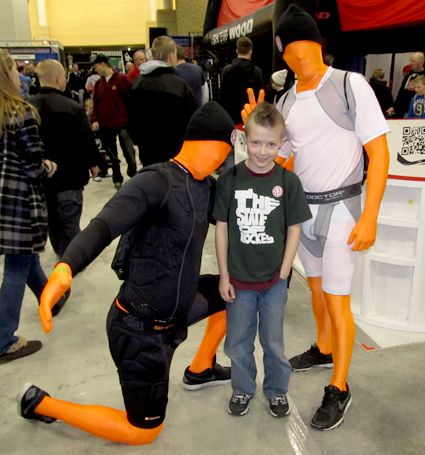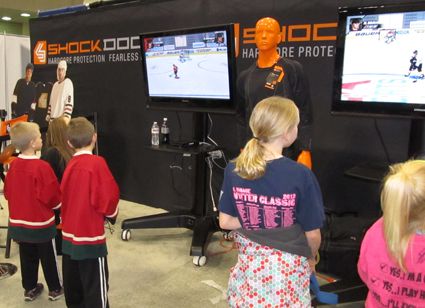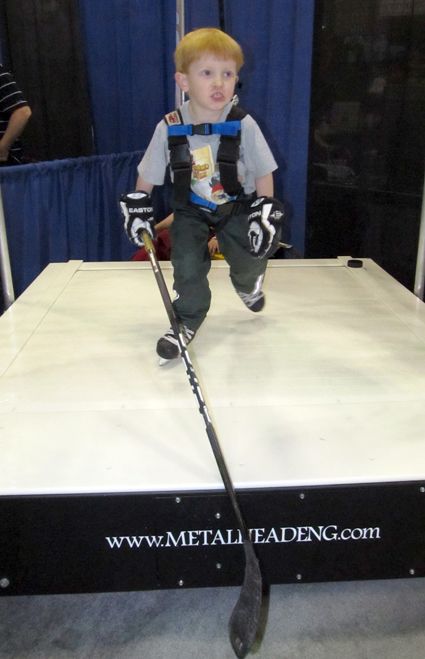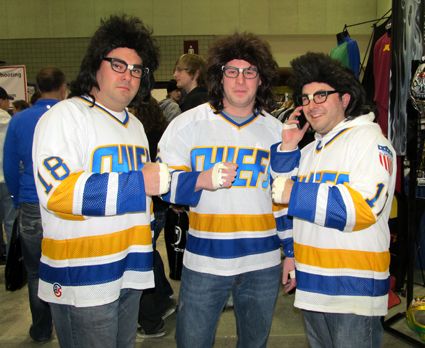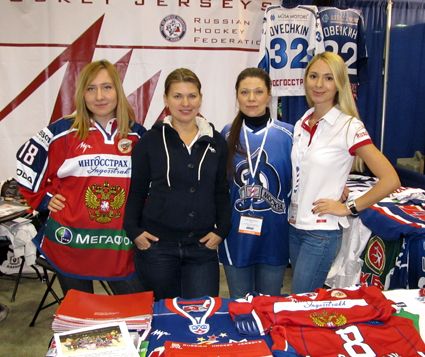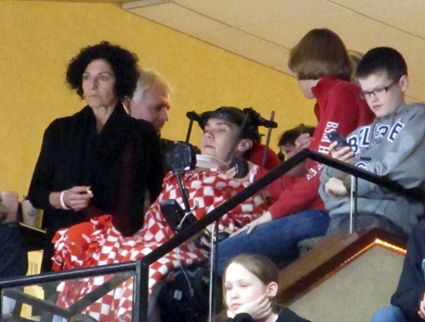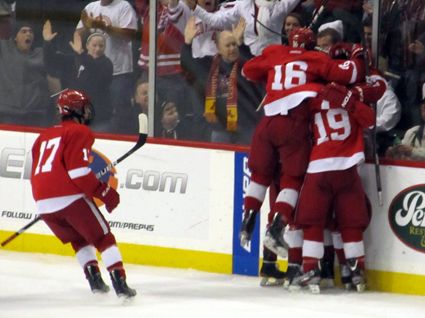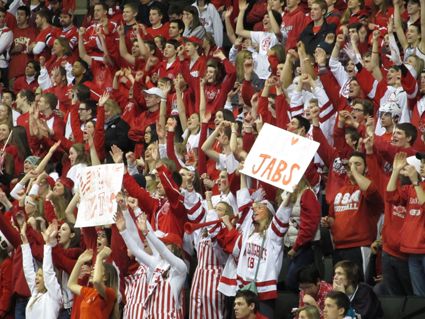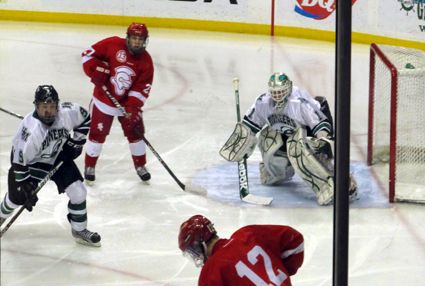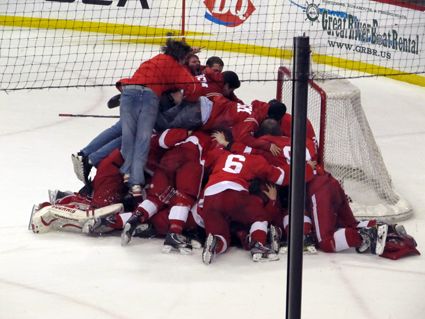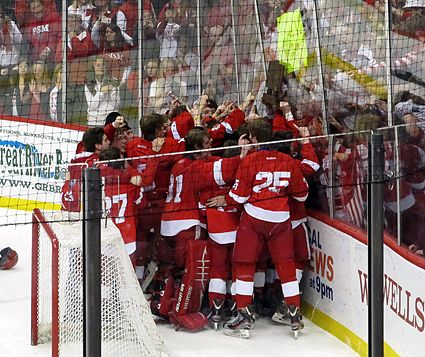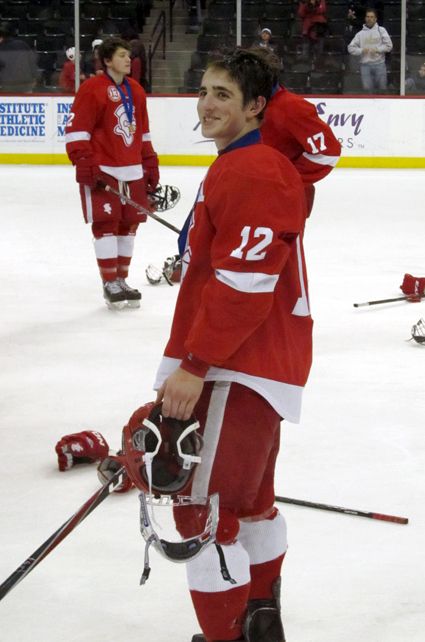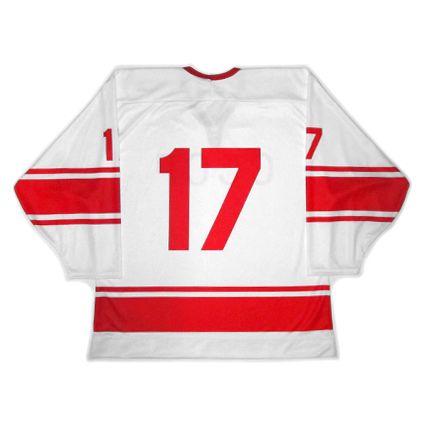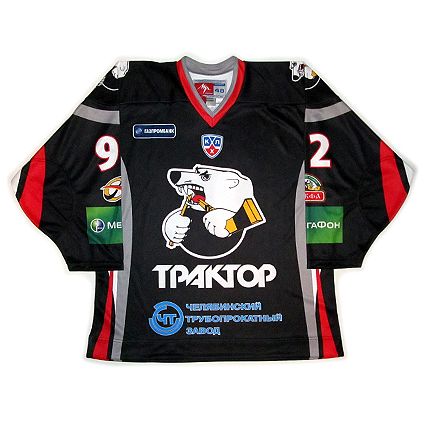Saturday, March 17, 2012
1991-92 New Jersey Devils Martin Brodeur Jersey
With today being St. Patrick's Day, we naturally have to take a look at one way an NHL club recognizes the annual Irish celebration.
Today, the New Jersey Devils, a team with an Original 6 mentality when it comes to eschewing third jerseys and frequent changes in style, will revert to their original red and green jerseys, first used when the team relocated to New Jersey from Denver, Colorado, where they were known as the Rockies.
Martin Brodeur during the 1991-92 season in the original Devils jerseys
That style was worn from 1982-83 until 1991-92 before the change to their new red and black jerseys, which have remained unchanged ever since, including the switch to the new Reebok Edge jerseys in 2007-08.
New Jersey first wore their now retro jerseys on St. Patrick's Day in 2010, a 5-2 victory over the Pittsburgh Penguins.
Noted Irishman Patrik Elias gets into the spirit of St. Patrick's Day
after being named the game's #1 star
Jamie Langenbrunner
The jerseys proved so popular, despite some critics of the "Christmas colors", that they were brought back a year later for the Devils game on March 18th, a 3-0 loss to the Washington Capitals.
Zach Parise
Despite the loss, the "wearing of the green" now looks to be an annual tradition, as the Devils will once again turn back the clock against the Penguins this afternoon, but the Devils President and General Manager Lou Lamoriello has stated that he would not let the club wear a different jersey more than once a season, so put aside any hopes of this ever becoming a formal "third jersey", which NHL rules state would be worn between 10 to 15 times.
Also today, the Boston Bruins will wear a limited edition Irish-themed green practice jersey during warmups for their game against the Philadelphia Flyers, which will then be auctioned off to raise money for charity. These special jerseys feature a shamrock on each shoulder and are different than the generic ones made for several NHL clubs and sold on Shop.NHL.com, which are not the practice style jerseys and have only one shamrock, which is located on the upper right chest.
The Bruins St. Patrick's Day warmup jerseys, as modeled by
Rich Peverly and Patrice Bergeron
Today's featured jersey is a 1991-92 New Jersey Devils Martin Brodeur jersey, as worn during his rookie season when he made his NHL debut wearing the #29. When Brodeur put on the classic red and green jersey for St. Patrick's Day in 2010, he did so with a mask painted with the same paint job as his first NHL mask, but stuck with his now famous #30. Brodeur was the only member of the Devils 2009-10 roster to have worn the original Devils red and green jerseys.
Brodeur in is retro paint job mask in 2010
Brodeur wearing his customary #30 paired with the Devils retro jersey
While the striping of the jerseys was true to the originals, the Reebok made jerseys did have the curved hem and collar treatment of the current Reebok Edge style, as identified by the NHL logo on the neckline.
Today's video section are highlights from the first time the Devils wore their original jerseys on St. Patrick's Day in 2010 in their win over the Penguins.
Labels:
New Jersey Devils,
St. Patrick's Day
Thursday, March 15, 2012
1965-66 Montreal Canadiens Jean Beliveau Jersey
Led by captain Jean Beliveau, the 1965-66 Montreal Canadiens were the defending Stanley Cup champions, having broken the string of three consecutive championships won by the Toronto Maple Leafs from 1962 to 1964.
Montreal started out well enough in 1965-66, winning their first three before a loss to the Chicago Black Hawks. After a tie with the Detroit Red Wings, the Canadiens met the Maple Leafs for the first time on November 4, 1965, which went the way of Montreal by a comfortable 5-1 score. A win and a tie against the Boston Bruins followed before their next game against the Maple Leafs, which ended in a 3-3 deadlock.
Another win against Chicago followed by their second tie of the season against Detroit preceded a third meeting with Toronto on November 18th. The Maple Leafs were led by captain George Armstrong and entered the game at 3-6-2 and needed a win to keep pace with the Canadiens, who were now at 6-2-3, already 7 points ahead in the standings. Trailing 1-0 after two periods, Toronto shocked the fans at the Forum with a trio of third period goals to take the game 3-1 and stay within 5 points of the Canadiens.
The Canadiens rebounded with a win over the New York Rangers 9-3 followed by a 3-2 loss the next night after having to travel to Boston. Montreal then went on a run of four wins, which began with a 2-1 win at Toronto, a 4-4 tie in Boston and three more wins to cap off a eight game undefeated streak, which was comprised of 7 wins and a tie to push the Canadiens record to 14-4-4.
The streak was ended by the Maple Leafs on December 16th, who again won in Montreal by a score of 3-2. The Maple Leafs were now in the midst of a ten game undefeated streak of their own, which improved their record from 7-10-3 on December 5th to 15-10-5 by New Year's Day.
The loss to Toronto began a period of five weeks mediocre play for Montreal, as they would close out 1965 by alternating wins and losses for four games before dropping another to the now streaking Maple Leafs on December 29th, again by a 3-2 score, only this time at Maple Leaf Gardens.
The start of the new year looked promising for Montreal with a pair of wins over the Rangers, giving Montreal 40 points at 18-8-4, while Toronto stood at 15-10-5, just five points back after trailing by 12 on December 12th. Montreal was not out of their funk however, as they dropped six of their next 10, including a 6-0 pasting by the Maple Leafs on January 13th at home, which ended a three game losing streak for Toronto.
Montreal finally found their game beginning on January 29th with a 6-2 win over the Rangers, followed by a 3-1 win over Boston and a 5-4 decision over the Maple Leafs, including the final three goals of the game to come from behind to win. A tie with Detroit and a win over the Rangers, pushing their record to 8-1 against the Blueshirts, extended their run to five games without a loss.
A loss, a tie and a win preceded another meeting with Toronto, who took a 3-1 win at home.
Chicago, New York, Boston, New York again and Detroit all fell to the Canadiens before a tie with Toronto ran Montreal's latest streak to six games without a loss and gave them 70 points from a 31-16-8 record. The Maple Leafs broke the streak with a 4-0 win in Montreal, their fourth win of the season at the Forum as they were now in the midst of another hot streak which would stretch to 9 games without a loss from 7 wins and a pair of ties. The win over Montreal left Toronto at 26-20-9 and 61 points.
Montreal would win three of their next five before their next meeting with Toronto on this date in 1966 at Toronto. Their 76 points leading the Maple Leafs by 7.
Bobby Rousseau would open the scoring with his 26th goal of the season just nine seconds into the game followed by J. C. Tremblay's goal just 31 seconds later giving Montreal a 2-0 lead less than a minute into the game. Claude Larose added another goal at 16:37 before Ron Ellis got Toronto on the board 30 seconds later to close out the first period at 3-1 for the visitors.
At the five minute mark of the second period, Beliveau's 25th goal of the season pushed the Montreal lead back to three with the first power play goal of the game to chase Johnny Bower from the Maple Leafs goal. Dave Keon struck back for Toronto just 20 second later to shrink the lead back to 3, only to have Beliveau respond after just another 23 seconds play to rudely greet Toronto's new goaltender Bruce Gamble after just 43 seconds of action. Ralph Backstrom's 18th goal of the season arrived 22 ticks of the clock later to set a new NHL record for the fastest four goals, all within one minute and five seconds.
The Canadiens would add one more score in the third period to make the final 7-2 in favor of Montreal. They would defeat the Rangers yet again before losses at Chicago and home to Toronto before they would finish the season with a five game winning streak to end the year at 41-21-8, good for 90 points and a first place finish during the regular season, 8 points up on Chicago and 11 ahead of the Maple Leafs, although Toronto would take the season series 5-7-2, including 5 wins in Montreal.
Rather than the expected 1 versus 4 and 2 against 3 pairings in the playoffs, the format of the day for some reason paired #1 against #3, and #2 versus #4, setting up a Montreal vs. Toronto first round matchup.
Montreal took Game 1 at home by a score of 4-3 after Beliveau's goal with 2:12 remaining. Gump Worsley shut out the Maple Leafs in Game 2 as a pair of third period goals by Montreal were enough for a 2-0 win at the Forum. After Toronto jumped out to a 2-0 lead after one at home in Game 3, Montreal responded with three goals in the second and two more in the third to win going away 5-2 and then closed out the series with a 4-1 win following a penalty filled first period that saw a dozen majors, six misconducts and a pair of minors in a huge brawl just 3:37 into the game, in which Toronto again led after one, 1-0, before Montreal scored a pair of power play goals by Tremblay in the second and a shorthanded goal and another power play goal in the third to advance to the finals.
Montreal would eventually win their second consecutive Stanley Cup after falling behind 2 games to none before roaring back with four straight wins to take the title.
The 1965-66 Stanley Cup champion Montreal Canadiens
Today's featured jersey is a 1965-66 Montreal Canadiens Jean Beliveau jersey. Believau was a ten time Stanley Cup champion with Montreal in his 20 years with the club. In addition to the Conn Smythe, Beliveau also won the Art Ross Trophy as scoring champion in 1956 and the Hart Trophy as MVP in 1956 and 1964. Had the Conn Smythe Trophy been in existence prior to the 1965 finals, odds are that Beliveau would have won at least one other one, particularly in 1956 when he led the Canadiens in playoff scoring with 12 goals and 19 points in just ten games.
A white Canadiens jerseys first arrived on the scene in 1935-36 and was worn only for games against the Red Wings. After some changes in striping, the first red shoulder yoke appeared in 1941-42. After three seasons, a new white sweater with a blue band trimmed in red around the chest arrived, which was used for three seasons until a return to the white jersey with the red shoulder yoke, which remains in use to this day.
Today's first video is a terrific find, footage of Beliveau being the first man to ever receive the Conn Smythe Trophy in 1965.
Next is the Top Ten Conn Smythe Trophy winners and a look at each of their spectacular playoff performances.
Labels:
Beliveau Jean,
Montreal Canadiens
2003-04 Toronto Maple Leafs Alexander Mogilny Jersey
At the beginning of 1989, former Buffalo Sabres Director of Amateur Evaluation Don Luce travelled to Anchorage, Alaska to to 1989 World Junior Tournament. There, Alexander Mogilny and linemate Pavel Bure were finishing third and fourth in tournament scoring while leading the Soviets to a 6-1 record and the gold medal. Luce met briefly with Mogilny in Anchorage and gave him a business card, cementing Mogilny's decision to defect at the first opportunity.
That opportunity arrived four months later when the Soviets were given two days in Stockholm after winning the 1989 World Championship. Luce, at home in North America, received a phone call on this date in 1989 from a man who claimed to be Mogilny's agent, Sergei Fomitchev. Unsure if he was really in contact with Mogilny, he asked Fomitchev to have Mogilny repeat what he had said to him in Anchorage. Told then that he had not played very well, Mogilny had stated "I show you next game", prior to scoring a hat trick against Canada to clinch the gold medal.
Mogilny while playing for the Soviet Union National Team
After Mogilny repeated the phrase, Luce and Meehan were on a plane to Sweden three hours later, arriving midday on May 3rd. While waiting for Fomitchev to return from shopping, Luce got an urgent call saying Mogilny's defection had to happen right away because it would be his best opportunity to get away.
The next two days were spent moving from hotel to hotel to avoid being found while Meehan worked with the U. S. Embassy to arrange the necessary paperwork.
The day they left they abandoned their rental car and took a taxi to the airport, and once inside the security gates, their fears of the Soviet officials was over. Meehan remembers, “He asked me in his broken English, ‘Am I free now?’ " And I said, ‘Yeah, you’re free.’ And he went over and had a beer. He couldn’t believe it. He said ‘free’, he didn’t say ‘safe’. He said ‘free’. I found that to be kind of poignant.”
During his rookie season in the NHL, Mogilny would wear the number 89, which was presented to him by the Sabres owner Seymour H. Knox III in recognition of his place in the draft and year of his defection.
Mogilny would play 65 games that season, scoring 15 goals and 43 points while he was in the process of becoming acclimated to living in North America and learning a new language and culture. "It was a huge adjustment to come to the NHL. The language barrier was the toughest part. Lack of communication affected me both on and off the ice. It also took some time to get used tot he airline travel. I had to deal with a fear of flying," Mogilny recalled.
He would double his goal total the following season to reach 30 for the first time.
The arrival of Pat Lafontaine in Buffalo would give Mogilny a world class teammate to work with and his point totals took another jump upwards, finishing 1991-92 with 39 goals and 84 points and became the first Russian on an NHL All-Star Team. Given a year to work together and now fully integrated into life in the United States and the NHL, Mogilny had one of the greatest seasons in league history in 1992-93. He would score 127 points from 51 assists and a remarkable 76 goals in 77 games. His 76 goals remain tied for fifth all-time in a single season with Teemu Selanne and Phil Esposito.
With Lafontaine limited to just 38 games over the next two seasons, Mogilny was named team captain in his absence, the first European to ever captain an NHL club, but his production suffered as a result of the missing Lafontaine.
Mogilny as captain of the Sabres
He was then traded to the Vancouver Canucks and reunited with Bure for the 1995-96 season, in which he would score 55 goals and 107 points, the second highest of his career in both categories.
The Russian duo of Mogilny and Bure reunited in Vancouver
After five seasons of diminishing point totals in Vancouver, from 107 to 73, then 45 twice, he was dealt to the New Jersey Devils late in the 1999-00 season, having previously enjoyed the most minimal playoff success to that point in his career, having only escaped the first round once in ten seasons.
Now with the Devils, Mogilny would see his first extended playoff run, which would evetnually lead to a Stanley Cup championship. When he won the Stanley Cup with the New Jersey Devils, he became just the ninth player in history to join the Triple Gold Club, having already won a gold medal at the 1988 Olympics and then adding World Championship gold just days before his defection in 1989.
The move to New Jersey was a positive one for Mogilny, as he would regain his scoring touch and exceed 40 goals for only the third time in his career, with 43 goals during an 83 point season and another run to the Stanley Cup Finals.
He would sign with the Toronto Maple Leafs for the 2001-02 season, where he would play for three seasons, including winning the Lady Byng Trophy in 2003 and scoring his 1,000th point on this date in 2004, only the second Russian player to ever do so, when he registered three assists in a 6-5 overtime win against his former club, the Sabres. It came a month and a day after his former World Juniors teammate Sergei Fedorov reached the 1,000 point mark. Mogilny then returned to the Devils for the final season of his career in 2005-06 before retiring with 473 goals and 1,032 points in 990 games.
Mogilny during his final season of 2005-06
Following his defection, Mogilny would never play for the Soviet Union again and only suited up for Russia just once at the 1996 World Cup of Hockey, cutting short what was destined to be an outstanding, international career.
When asked following his career about the reasons for his defection, Mogilny responded, “Why did I do it? I did it for freedom. If the bird can fly and the fish can swim, you have to be able to move around the world and be free and not watched constantly. If a human being doesn’t have freedom, that’s not life. It’s like living in a cage. To me, you might as well be dead.”
Today's jersey is a 2003-04 Toronto Maple Leafs Alexander Mogilny jersey from the season during which he scored his 1,000th NHL point.
The evolution of this Maple Leafs jersey began back in the 1992-93 season when Toronto adopted a brand new style jersey with a more traditional look based on a sweater first worn back in 1934-35, only now paired with their modern Maple Leafs crest. The jersey first evolved with the adoption of a modern name and number font in 1997-98. While the name remained unchanged, the curvy numbers were replaced in 2000-01 with a return to a more classic block font for the numbers, although now trimmed in blue and outlined in silver, the first time a third color had been used on a Maple Leafs jersey since World War II, when the lettering on the crest was red for a few seasons.
The retro style maple leaf secondary logo was replaced by a new "TML" monogram at the same time the number font was changed in 2000-01.
In today's video section, an interview with Mogliny from the 1989 World Junior Championships in January, a few months prior to his defection in April after the World Championships. He sticks to the party line quite well, giving little hint as to what was to follow, or at least that's what the interpreter tell us...
Here is a look at the some of the career highlights of Alexander Mogilny.
Here, Mogilny scores his 70th goal of the 1992-93 season, only the seventh player to reach 70 in NHL history.
Speaking of the remarkable 1992-93 season, here is a brief feature story on the partnership between Mogilny and Lafontaine.
Labels:
Mogilny Alexander,
Toronto Maple Leafs
Wednesday, March 14, 2012
1932-33 Chicago Black Hawks Paul Thompson Jersey
Tommy Gorman was the youngest member of the Canadian lacrosse team that won he gold medal in the 1908 Summer Olympics. He subsequently played professionally before becoming first a sport writer, and then editor for the Ottawa Citizen newspaper until 1921.
While he still worked at the Citizen, Gorman was recruited by Ted Dey, owner of the Ottawa Senators of the National Hockey Association to help him recruit players, which he did so well he was hired as the club's secretary-treasurer.
Due to ongoing difficulties with Eddie Livingstone, owner of the Toronto franchise in the NHA, Gorman who was now manager and part owner of the Senators, George Kennedy (owner of the Montreal Canadiens), Sam Lichtenhein (Montreal Wanderers) and Mike Quinn (Quebec Bulldogs) all hatched a plan to suspend the NHA and a week later reform as the National Hockey League in a not very transparent effort to rid themselves of Livingstone.
Gorman was quoted as saying at the time, "Now that we got rid of Livingstone, we cant get down to the business of making money."
The Senators proceeded to win the Stanley Cup in 1920, 1921 and 1923 before Gorman sold his interest in the Ottawa franchise and became the manager-coach of the expansion New York Americans in 1925.
The 1922-23 Ottawa Senators
He remained with the Americans until 1929 when he resigned and became involved in horse racing, including owning the notable horse Phar Lap.
He remained in the horse racing world until the racetrack where he worked was sold in 1932. He returned to the NHL midway during the 1932-33 season when he was hired as the new coach of the Chicago Black Hawks following Emil Iverson, who coached the club for 21 games, and Godfrey Matheson, who was at the helm for just two losses.
He took over the helm o January 15th with the club sitting at 8-9-6. Following a loss in his debut, things began to turn around for the Black Hawks, who won four of their next six games, followed by a pair of ties to improve to 12-12-8. Two losses, two wins and two ties came in succession before a pair of losses closed out February.
March began with a win over Gorman's former club the Americans, followed by a loss to Toronto and a win and tie against Ottawa. The Maroons defeated Chicago on March 11th to bring them to their next game on this date in 1933 against the Bruins in Boston.
With the game having reached overtime, Marty Barry had scored for Boston giving them a 3-2 lead (overtime was played to full time in those days, and not sudden death) and Gorman objected. His argument with referee Bill Stewart became so heated that Gorman eventually punched Stewart, who reportedly landed a few blows of his own before he called the police to have Gorman ejected! The Black Hawks players left the ice in protest, which led to the game being ruled a forfeit in favor of Boston, the first forfeit in NHL history and one of only two in it's 95 year history, the other being the Richard Riot in 1955.
While the Black Hawks would finish last in the American Division and out of the playoffs in 1933, they would rise to second in the division in 1933-34 and qualify for the postseason. They would defeat the Canadiens 4 goals to 3 in their two game, total goals series. The Maroons would fall next 6 goals to 2 before Chicago would win the first Stanley Cup in franchise history following a 3 games to 1 win over the Detroit Red Wings, including a dramatic win on a goal by Mush March 10:05 of the second overtime for a 1-0 win, the final game for Black Hawks star goaltender Charlie Gardiner, who died of a brain hemorrhage two months later.
The 1933-34 Chicago Blackhawks
Ten days after their triumph, Gorman resigned after a dispute with Chicago's ownership. He landed on his feet however, as he signed on as coach of the Maroons, whom he guided to a Stanley Cup victory the very next season, becoming the first and only coach to win consecutive cups with two different clubs.
The 1934-35 Montreal Maroons
He remained with the Maroons until they folded in 1938 before becoming the general manager of the Canadiens in 1940. When Montreal won the Stanley Cup in 1944, he became the only person to manage four different teams to championships, a feat unmatched not only in the NHL, but Major League Baseball, the NFL and NBA.
The 1943-44 Montreal Canadiens
He would retire as General Manager of the Canadiens in 1946, after which he bought and managed the Ottawa Senators of the Quebec Senior League, guiding them to an Allan Cup championship in 1949.
He later became involved in promoting, including figure skating tours, professional wrestling and baseball, as well as managing a horse racing track near Ottawa.
At the time of his passing in 1961, he was the last living founder of the NHL and was subsequently inducted into the Hockey Hall of Fame in 1963, the Ottawa Sports Hall of Fame in 1966 and the Canadian Horse Racing Hall of Fame in 1977.
Tommy Gorman
Today's featured jersey is a 1932-33 Chicago Black Hawks Paul Thompson jersey, as worn during the one and only forfeit in the over 5,800 games played in franchise history over a span of some 85 seasons.
Thompson led the Black Hawks in goals (13), assists (20) and points, with 33. He played the first five seasons of his career with the New York Rangers, including winning the Stanley Cup in 1928, before joining the Black Hawks for the final eight seasons of his career, which included additional Stanley Cups in 1934 and 1938.
This was the first black sweater in NHL history, created when the Black Hawks reversed the colors of their original white sweaters worn during their inaugural season in 1926-27. This style was worn for seven seasons, which concluded with the Black Hawks first Stanley Cup championship in 1934.
Labels:
Chicago Blackhawks,
Gorman Tommy
Tuesday, March 13, 2012
1973-74 Boston Bruins Johnny Bucyk Jersey
Johnny Bucyk ranks as one of the most successful yet overlooked hockey players in NHL history.
He began his road to the NHL in 1951 when he joined the Edmonton Oil Kings of the Western Canadian Junior Hockey League for a single playoff game. He returned to the Oil Kings for the next two seasons, scoring 67 points in 33 games in 1954 and went on to win the prestigious Memorial Cup, before moving up to the Edmonton Flyers of the Western Hockey League for the 1954-55 season, scoring 30 goals and 88 points in 70 games.
Buyck while with the Edmonton Oil Kings
That performance earned Bucyk his chance to debut in the NHL with the Detroit Red Wings in 1955. Life in the NHL was not the same, as Bucyk competed in 38 games and managed just a single goal and eight assists for nine points. In his second season in Detroit he fared better, scoring 10 goals in 66 games.
A rare shot of Bucyk in a Red Wings jersey
That would prove to be the end of Bucyk's time in Detroit however, as he was traded to the Boston Bruins when the Red Wings reacquired goaltender Terry Sawchuk, whom they had dealt to Boston just two years prior.
His arrival in Boston back in 1957 would begin an affiliation with the organization that continues today, more than 50 years later. While it looked at first that Bucyk had arrived in Boston at a good time, evidenced by going to the Stanley Cup Finals in his first season in Boston, things would quickly turn sour for the club following a first round elimination in the 1959 playoffs, as the Bruins would spend the majority of the 1960's out of the playoffs, missing the postseason eight consecutive years, five of which were as the league's doormat buried in last place waiting for the arrival of Bobby Orr and Phil Esposito.
An early Bucyk hockey card following his trade to Boston
Still, Bucyk's personal numbers were incredibly consistent throughout, as eight of his ten seasons were between 52 and 66 points. During that period, Bucyk, a big player for his era a 6', 215 lbs., led the Bruins in scoring in 1962, 1963, 1965 and 1967, a season in which he was team captain.
1966-67 was also the season that the Bruins would begin to climb out of the depths with the arrival of Orr, followed by Esposito the following season. Bucyk would never again lead the Bruins in scoring, but the arrival of Orr and Esposito would ignite a scoring revolution that would propel Bucyk to personal bests never before imagined.
In a hilarious photo, Johnny Bucyk poses with goaltender Eddie Johnston and Bobby Orr as they pose with pucks indicating their career goal totals, Bucyk having just reached 300, Johnston still stuck at zero and Orr at 78!
Esposito's first season with Boston saw Bucyk reach 30 goals for the first time ever and eclipse his personal best season total with 69 points as the Bruins returned to the playoffs for the first time since the 1950s. Two seasons later he would equal the 69 points, but raise his goal total to 31. During the postseason, 11 more goals would follow as Bucyk scored 19 points in 14 games as the Bruins won their first Stanley Cup in 29 years. As the Bruins had no captain from 1967 to 1973, Bucyk, as the assistant captain with the greatest seniority, was the first to hoist the cup during the championship celebration.
Bucyk raises the 1970 Stanley Cup
1970-71 was a memorable one for Bucyk, as he would join the exclusive ranks of the 50 goal scorers, as he became the only the fifth player to accomplish the feat, only to be overshadowed by teammate Esposito's record shattering 76 that same season. Bucyk added 65 assists to surpass the 100 point mark for the only time in his career with 116 as Bruins Esposito (152), Orr (139), Bucyk and Ken Hodge (105) finished 1-2-3-4 in league scoring! When it came time to hand out the hardware at the conclusion of the season, Bucyk was named the recipient of the Lady Byng Trophy thanks to his season total of a mere 8 penalty minutes in 78 games.
This card commemorates Bucyk's first Lady Byng Trophy
Although his personal point totals were all down somewhat, his 83 points were still his second best season to date, his 20 points in 15 playoff games were key to the Bruins capturing the second Stanley Cup of Bucyk's career in 1972.
His offensive numbers would rise once more in 1972-73 when Bucyk scored 40 goals for only the second time in his career and his 53 assists propelled him to a 93 point season, including scoring his 1,000th career point, only the seventh player to reach that illustrious total.
He was again named team captain of the Bruins in 1973, a position he would hold until 1977. Following his 116 point season in 1971, Bucyk was a very consistent, productive player, averaging 83 points per season, and never below 75. 1973-74 saw the Bruins again return to the Stanley Cup Finals and Bucyk collect the second Lady Byng Trophy of his career after again finishing with just 9 penalty minutes. Amazingly, Bucyk was not awarded the Lady Byng in 1972, a season in which he was penalized a total of just 4 minutes, a mark equalled by the winner Jean Ratelle.
"I played physical but clean hockey," said Bucyk. "Most people think that the only reason a player wins the Lady Byng is because he is gentlemanly, but I had the ability to play physical and not draw penalties. I contributed offensively and stayed out of the penalty box."
On October 30, 1975, Bucyk would again join an exclusive club when he became only the seventh player to reach 500 career goals, a tribute to his longevity, as he reached the 500 goal plateau in his 1,370th game. Of the 41 players to date to reach 500 goals, only Ron Francis would anyone require more games than Bucyk with 1533. Bucyk scored 20 goals or more in 16 of his 23 seasons.
Bucyk celebrates his 500th goal
He would play two more seasons before retiring at the age of 42 due to chronic back problems as the Bruins all-time leader in goals (556), assists (813) and points (1,369) as well as career games with 1,540. He was also the fourth leading scorer of all-time as well as the leading scorer among left wings and third in games played at the of his retirement.
The Bruins retired his #9 on this date in 1980 and he became a member of the Hockey Hall of Fame in 1981.
"Having my Number 9 retired at the Boston Garden in 1980 was outstanding. It’s very exciting to see your number hanging there along with all the other great players. It’s the greatest honour a player can get."
Today's featured jersey is a 1973-74 Boston Bruins Johnny Bucyk jersey, as worn the season Bucyk won his second Lady Byng Trophy.
This jersey features the Bruins 50th Anniversary patch, the first commemorative patch of the modern era. The last patch worn on an NHL jersey prior to the Bruins 50th Anniversary patch was back in 1951-52, a gap of 22 seasons. By the end of the decade ten more patches had been added to NHL jerseys, including the arrival of the memorial patch, first worn by the Philadelphia Flyers in in 1977 for Barry Ashbee.
Today's video segment begins with Johnny Bucyk Night in Boston, when the celebrate his 50 years with the organization.
Here, Bucyk scores a goal on February 25, 1971, igniting a Bruins outburst that results in the three fastest goals in NHL history at just a lightning fast 20 seconds!
Finally, a profile of Bucyk from the excellent Legends of Hockey series.
Labels:
Boston Bruins,
Bucyk Johnny
Monday, March 12, 2012
The 2012 Let's Play Hockey Expo & Minnesota State High School Hockey Tournament
As you may have noticed we had no new post yesterday, as on both Friday and Saturday your intrepid reporter spent the entire day at the 2012 Let's Play Hockey Expo and Minnesota State High School Hockey Tournament in St. Paul, Minnesota.
The Let's Play Hockey Expo
The Expo is billed as the Nation's Premier Consumer Trade Show, and with many exhibitors competing for the attention attention of 40,000 hockey fans, there are many great deals and freebies to be had, and today we are going to share our haul.
Friday the show began at 10 AM and we spent several hours looking for the best bargains and some early giveaways before the popular ones were all gone.
Our haul that morning included the following pictured below, and was actually rather minimal, but included the following pictured below. Clockwise, a free t-shirt from PureHockey.com, a coupon for 10% off and a free skate sharpening from our local Hockey Giant location, a Kontinental Hockey League knit cap for $5 from Torspo to go with our KHL Torspo hooded sweatshirt and jacket we already own and a catalog of Russian hockey jerseys from our friends at Lutch Jerseys (pronounced "lootch") who came all the way from Russia for the Expo!
Our Friday swag
Our approach this year was somewhat different than in the past, as we did not seek out as many freebies as we have in the past and passed on a few shopping opportunities, knowing we would be returning on Saturday. Instead, we took advantage of the chance to document the color of the event and get some autographs with several of the impressive guests in attendance, which was a clearly a step up from some of the recent years.
Two of the most popular destinations for the fans in attendance, particularly the male players from 10-30 were the large enclosures from Bauer and Easton, with Bauer having a small theatre with promotional movies for their gear followed by chances to see and try their helmets, goalie gear, skates and sticks, while Easton's approach was more interactive, which featured a pair of small rinks for shooting accuracy challenges to give their sticks a try.
The line for the Bauer display was immediate and consistent
Easton's pavilion had a pair of popular shooting rinks
That approach was also taken by Warrior Hockey, who had one accuracy test and another for hardest shot.
The Minnesota Wild also had a booth which featured a small store selling smaller souvenirs as well as their own shooting rink, which was more popular with the younger crowd, as well as their spin the wheel game, which gave out a variety of prizes, such as hockey cards and pucks.
Wild accuracy rink
Wild Spin the Wheel
Also adding to the color of the event were the well protected human mannequins of Shock Doctor, who would freeze in a pose and then humorously harass unsuspecting passers by.
Shock Doctor's human mannequin Orange Men
Also interacting with the kids was the Minnesota Wild's mascot Nordy.
William and Caden with Nordy
We then made a point of stopping by the Under Armour/Bite Tech booth to see former Minnesota Wild player Cam Stewart, whose game worn year one, set one jersey from the inaugural Wild season is part of our collection. We've wanted an opportunity to talk to Cam for since acquiring his jersey, as it has his original #18, and we have always wondered why he later changed his number to the #21 he worn in college while at the University of Michigan.
Cam was very surprised and excited to see his old jersey and related that as an NHL professional, it was the first time he had enough clout to actually request a number he wanted and not have to live with whatever he was given. He informed us that our jersey was only worn for three games, including being on the ice for the first ever Wild goal scored at home.
Cam Stewart poses with us and his original Wild home jersey
One booth in particular saw a lot of traffic over the weekend, the one which was selling all manner of items to raise money to support the enormous medical expenses of paralyzed Minnesota high school player Jack Jablonski.
Jack's younger brother Max and friends manning the booth set up in support of Jack
Also present with large displays were CCM and Reebok. In addition to the big manufacturers of hockey gear, there were other retailers of equipment, such as Total Hockey and Hockey Giant, and one of the ways you can attract attention to your booth when your target market is young athletes of high school age is pretty girls, of which there were many at the expo.
Pure Hockey
Sauce Hockey
Warrior Hockey
The other approach you can take is to have a celebrity endorser, an approach taken by Graf Hockey in the form of Stanley Cup champion Claude Lemieux.
Claude Lemieux
One of the highlights for us was a chance to meet Hockey Hall of Famer Brett Hull, who appeared at the Miken Hockey area for hours, signing autographs for anyone and everyone while happily chatting away the entire time.
Brett Hull signing one of his many autographs
Our newly signed Brett Hull 1996 USA jersey
The other big highlight, not just of our day, but our entire life of being a hockey fan, came courtesy of John Harrington, a member of the 1980 "Miracle on Ice" United States Olympic Team, who was at the Herb Brooks Foundation booth and happily posed with his gold medal for us.
1980 US Olympian John Harrington
But when the offer came from someone else to take our photo together, Harrington came out from behind the table and shocked us by draping his 1980 Olympic gold medal around our neck! We genuinely felt excitement, pride (and some fear) all at the same time to be wearing such a rare and priceless artifact that is such a significant part of hockey history. Luckily for us, we just happened to be appropriately wearing a USA jersey at the time. The medal has got some weight to it too. When you have it on, you know you're wearing it!
Saturday week returned to the Hockey Expo to take in the proceedings from the viewpoint of a eight year old, whose goal was to try out as many stick handling, puck shooting, lucky wheel spinning interactive opportunities as possible!
Many exhibitors obliged, with displays of puck rebound devices, goal net target practice inserts, stick handing drill contraptions, hardest shot radar guns and puck shooting accuracy contests, as well as lucky spinning wheels for prizes. After stopping by the Warrior Hockey barbershop for a mohawk haircut for our youth player, we went in search of our fun and freebies.
Saturday's haul for us and our seven year old included, starting clockwise from the upper right, a USA youth hockey jersey by K1, won as a door prize from Let's Play Hockey, who put on the event, two rolls of hockey tape from Warrior, two pucks from Shock Doctor, a sticker for the upcoming NCAA West Regional tournament, a scarf from the Minnesota Wild, a copy of the new Puck Life magazine, a Minnesota Wild backpack won from Sport Sense, a photo signed by former NHL goaltender Andy Moog at the Vaughn booth, a copy of Minnesota Score magazine, a pair of hockey cards from the Minnesota Wild, a button in support of Jack Jablonski from his merchandise booth, a "Design Team" t-shirt from K1 jerseys won as another door prize, a hockey bookmark and finally a signed photo from 1960 United States hockey gold medalist Paul Johnson, who also had his medal on hand for all to see. Total cost for all 17 items? Free!
Also in the upper left are a pair of Benilde-St. Margaret's adult and youth t-shirts purchased on the street for $5 each after the championship final and at the top center our game program from the tournament, which was also $5.
Saturday's haul of swag
Our mite player, mohawk and all, found opportunities to shoot, pass and stickhandle, as well as play video games, spin lucky wheels and sample some really good free pizza as well as finding enough free candy for an entire class of second graders.
Following our early adventures at the expo, we made our way over to the arena for the Class A final between Hermantown and St. Thomas Academy, a rematch of last year's final which again went the way of St. Thomas, who spoiled the Hawks bid for an undefeated season with their 5-1 win.
St. Thomas pressures Hermantown
Back over to the expo, our mite also had his picture taken with the Orange Men from Shock Doctor, while their video games were a hit with the kids.
One of our favorite sightings was this tyke skating like the wind on this plastic ice treadmill!
Go faster!!
No hockey event worth your time would be complete without a sighting of the Hanson Brothers, and this year's Hockey Expo did not disappoint.
But what of jerseys, you ask? While there are not a lot of them for sale at the expo, K1 always has some deals to be had, with jerseys from the Minnesota Gophers, Minnesota Duluth Bulldogs and North Dakota (get 'em while you can) Fighting Sioux and old WHA Minnesota Fighting Saints at $40 for adults and $20 for youth, we just cannot let an expo pass by without picking up something from the Russian jersey manufacturer Lutch, who makes jerseys for the vast majority of teams in the KHL.
The staff at the Lutch Jerseys booth, all the way from Russia
Following the closing of the Expo at 6 PM, we made our way into the Xcel Energy Center for the highly anticipated Class AA championship final between the Hill-Murray Pioneers and the Benilde-St. Margaret's Red Knights. The game was played at a very high tempo with the majority of the fans pulling for the Red Knights due to the presence of their injured teammate Jablonski.
Jack Jablonski
The game came down to one story, the electrifying performance of Benilde's Grant Besse, who skated his way into state tournament lore with his five goal performance, three of which were shorthanded! It was truly an emotional and memorable game and the perfect way to finish off a 12 hour day at both the expo and the tournament.
Grant Besse is mobbed after one of his two first period goals
The Benilde fans in rapture following a goal
#12 Besse looking to add to his amazing total of 5 goals
The Red Knights emotional celebration following their long journey to their championship
The team sharing their trophy with their fans
A beaming Grant Besse following his remarkable performance
Today's featured jersey is a 1972 Soviet Union National Team Valeri Kharlamov jersey purchased directly from Lutch at the Hockey Expo for the show price of just $40.
We've long been fans of dye-sublimated jerseys from Tackla, as far back as the late 1980's, and Lutch jerseys, which date back nearly as far in our collection. Their bright colors wash and wear beautifully and are not subject to cracking and peeling like heat sealed or silk screened graphics, but this new level of quality out of Russia rivals anything produced for NHL clubs, if not surpasses it.
For more on the great Kharlamov, please see our recent biography on him here.
Bonus Jersey: Today's bonus jersey is a 2010-11 Traktor Chelyabinsk Evgeny Kuznetsov jersey with it's intimidating black color and angry polar bear logo. We just can't resist a jersey with the name on the back in Cyrillic, and could not pass on the chance to pick up this striking jersey from the 2010 Washington Capitals first round draft pick.
This jersey is a prime example of a dye-sublimated jersey we have grown accustomed to from Lutch. Note modern style, with it's curved and intricate striping in great contrast to the minimalist style of the Soviet National Team jersey from forty years earlier.
Here are the highlights of the championship final, won by the Benilde-St. Margaret's Red Knights, powered by Besse's remarkable five goals, three of which were shorthanded.
From the fan's point of view, the final seconds of the Class AA championship game and the ensuing celebration.
Labels:
Let's Play Hockey Expo,
Lutch,
Russia
Subscribe to:
Comments (Atom)


